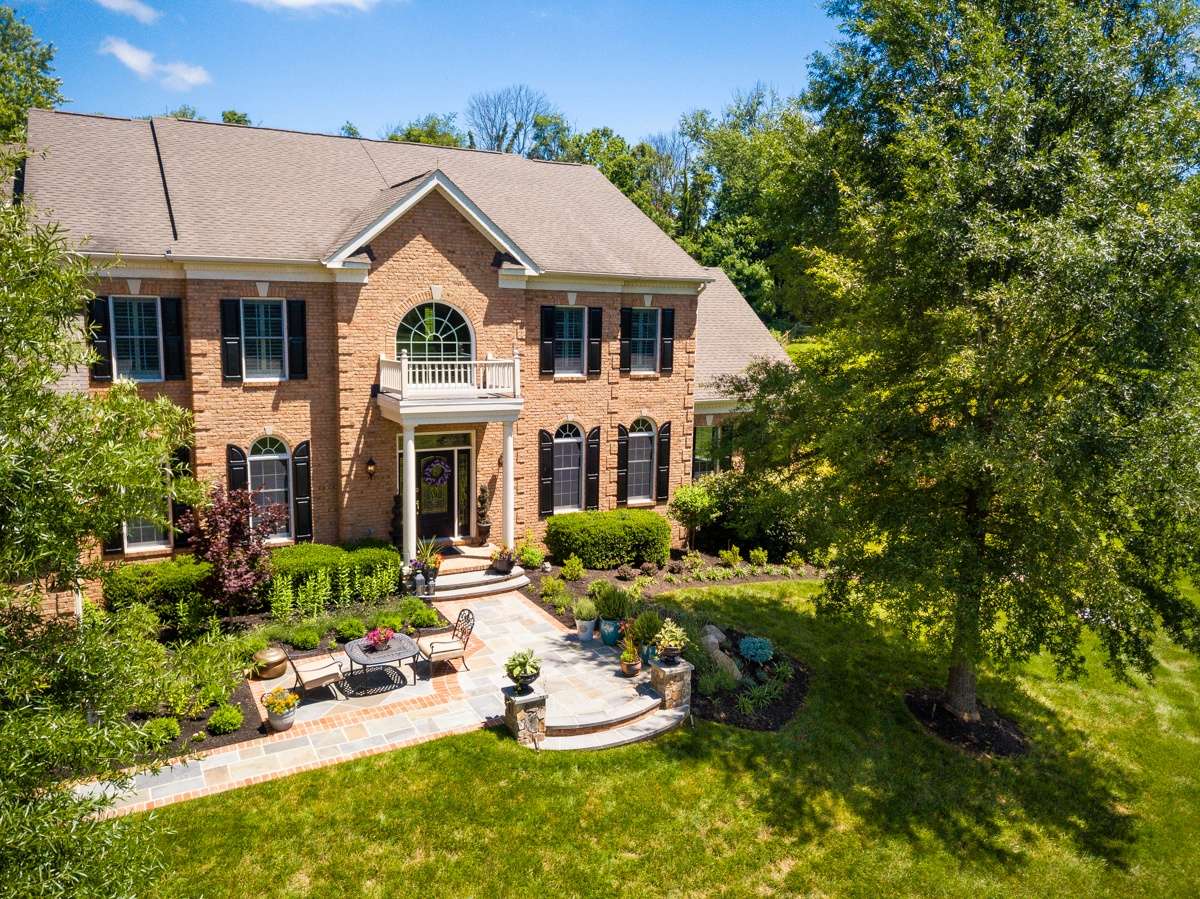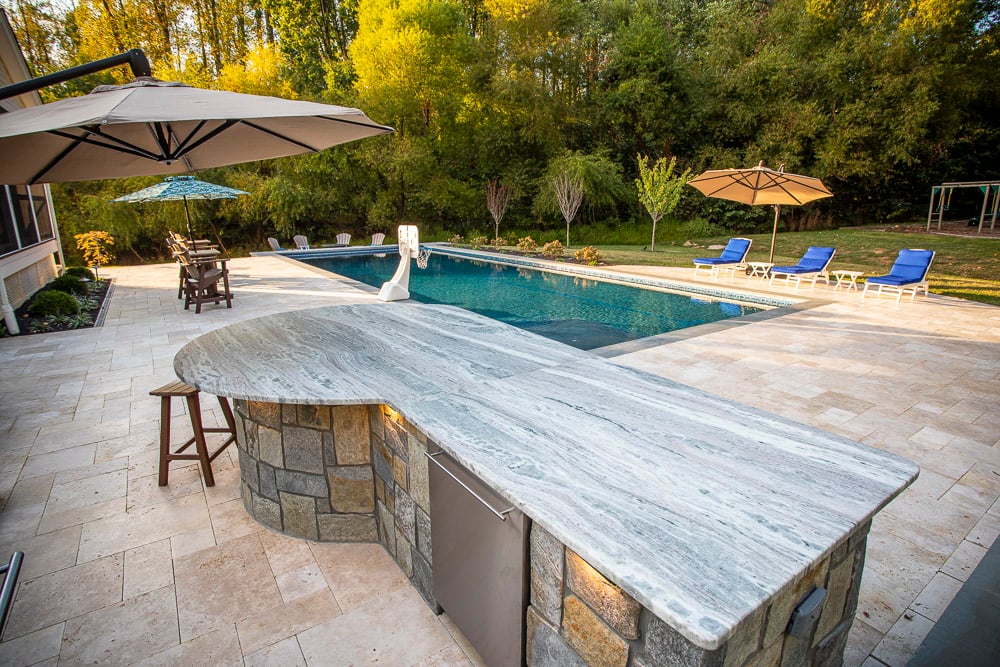If you have a flat property or maybe some unsightly views that you want to block, you might be looking for unique landscaping solutions.
A landscaping berm is one possible solution that can add aesthetic appeal to your property…or serve the functional purpose of blocking an unwanted view.
In this article, we’ll tell you everything you need to know about berms for landscaping, including why it’s something best left to a pro if you want the best results.
What is a Berm in Landscaping?
A berm is simply a mound of soil added to a property to either create some aesthetic interest (particularly on a very flat property), highlight a focal point, or block an unwanted view.

Berms can help improve the landscape design of a front or a backyard. A very flat backyard might not have much interest or appeal. But adding berms can boost curb appeal in the front yard or make the backyard more visually enjoyable.
Building a Landscaping Berm
Building a berm isn’t exactly rocket science, however, there are right and wrong ways to go about it.

Let’s look at some berm errors that need to be avoided.
Berm Erosion
One of the biggest problems with a berm is erosion. Over time, your berm might get smaller. This can be problematic as it can defeat the purpose of the berm (which might have been to block a view).
Some of this is natural and going to happen due to common occurrences like wind and rain. Not all berm erosion is entirely preventable.
Generally, a nice layer of mulch can help assist with erosion while also providing important insulation to plant roots. Mulch also helps to suppress weed growth and retain water.
Improper Sizing
Another problem with a landscaping berm is when the sizing is off. Usually, a berm is built too small and looks dwarfed in comparison to a nearby home.
When a berm looks out of scale, it defeats the aesthetic purpose.

However, the same is true for a berm that is too large. It’s important that the berm is in scale to the property and what is on it.
Also, keep in mind that any plants you incorporate into the berm should be in scale with their size. For instance, you wouldn’t want a handful of small flowers installed into a large berm as they’ll look bare and out of place. But you also wouldn’t want a bunch of large shrubs on a small berm.
An Unnatural Look
In general, you want your landscaping berm to look naturally-occurring or you risk it looking out of place. That means not only thinking about the height of the berm but the width, too. It should look like a natural hill with a casual slope (not a steep drop-off).
A more natural-looking berm generally has more of a crescent or curved appearance. A gradual sloping berm will also be less likely to erode.

Keep in mind that where you locate your berm will also contribute to how naturally it “fits” into your property. It should be a natural-looking addition to your overall landscape design. If it looks “plunked” into the middle of the landscape it’s going to look out of place.
The peak of the landscaping berm does not have to fall directly in the middle…in fact, that would look less natural. It should generally be located more to one side than another (though the exact look you’re trying to achieve will help dictate this).
You could also have more than one peak in a berm, all depending upon what look you’re going for.
Functionality Failure
Another potential problem is if the berm was meant to serve as a privacy screen but doesn’t end up fulfilling this purpose (either due to poor location or sizing). This is why thoughtful planning and design is so important with a landscaping berm.
When built properly, a berm can be a visual barrier to an unwanted view and can also provide windbreaking and/or noise-blocking functions.
Incorporating a Landscaping Berm into Your Landscape Design
At the end of the day, a berm is just one of many options that can be incorporated into your landscape design.
One of the best things about working with a landscape professional is that they’ll know the best way to incorporate a berm so that you get the maximum value out of it. That means knowing exactly where on your property it should be designed and installed.

Along with that, they’ll also know which plants will work best in the design. The slope of the berm can create some unique challenges for planting but a landscape pro will know what to do.
Plus, they’ll also be able to help select the right size and shape plants that will maximize the appeal of your berm. In general, shorter plants are usually installed at the top and sides of the berm while taller plants work best in the back. But this can all differ based on the size and shape of your berm.
While a berm might seem easy enough to build, it’s only one part of a total landscape design and is definitely best left to a professional. They’ll help you get the most out of it so that you’ll have no regrets.
Investing in Landscape Design and Installation in Northern Virginia
If you’re thinking about ways that you can enhance your Northern Virginia property, a landscaping berm is one possible idea. But it’s important to work with a landscaping professional who can offer lots of suggestions and ideas that will help breathe new life into your property.
At Rock Water Farm, we know that every project is unique which is why we take a custom approach every single time. A berm isn’t always the right solution for every property but there are many times when it can be a nice addition.
Ultimately, your goal is a landscape design that is going to enhance your property in the best possible ways. When you work with the right pro, you can feel confident that the end result will be everything that you dreamed (and more).
If you’re ready to see your landscaping ideas come to life at your Gainesville, Haymarket, or Round Hill, VA home, talk to an expert, choose a solution that rocks, and then get ready to see that dream take shape.






